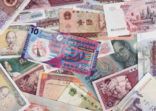Looking only at the first half from January to June, the China equity fund sector in Hong Kong shows strong performance versus the MSCI China Index. Some 70-odd funds out of 110 in the category beat the 13.08% return of the MSCI China.
However, over a three-year horizon, the picture is much different. Only 15 funds have managed to beat the MSCI China.
For the three year period to 30 June, the MSCI China was up 51.5%, far ahead of the category average of 31.9%.
The US-China trade dispute is the easy target of blame, but also added in could be the mainland’s slowing GDP growth as well as investors concerned about China’s overextended corporate credit.
The top three-year performer was Aberdeen Standard’s China A Shares. For both Aberdeen and the second best UBS China Opportunity, the financial and consumer discretionary sectors account for the biggest investment exposure.

Bottom performers
It is interesting to note that the worst performer for the period is a passive fund, the CSOP SZSE ChiNext ETF. It tracks the ChiNext Index, the Nasdaq-type board of the Shenzhen Stock Exchange.
However, the outlook may improve. In the first half of the year, the ChiNext was up about 20%, and the MSCI China is in the process of a phased inclusion of companies listed on the ChiNext board.
Bottom five funds vs MSCI China and category average, 3 years

Paradigm change?
Despite the recent agreement to re-start trade talks, active managers will likely be struggling to beat the benchmark in a new economic reality.
“[T]ariff negotiations are separate from the broader theme of a US-China economic decoupling that will likely persist, regardless of political leadership in the United States,” wrote Frances Donald, chief economist at Manulife Investment Management, in an otherwise optimistic client note on US and China trade.
“Trade tensions have kick-started the trend towards dual supply chains, shifting production facilities, higher world average tariffs and a general theme of de-globalisation.
“This is an important paradigm shift relative to the last 90 years of globalisation. It is also a negative productivity shock and suggests lower long-term potential growth (for everyone). “

















